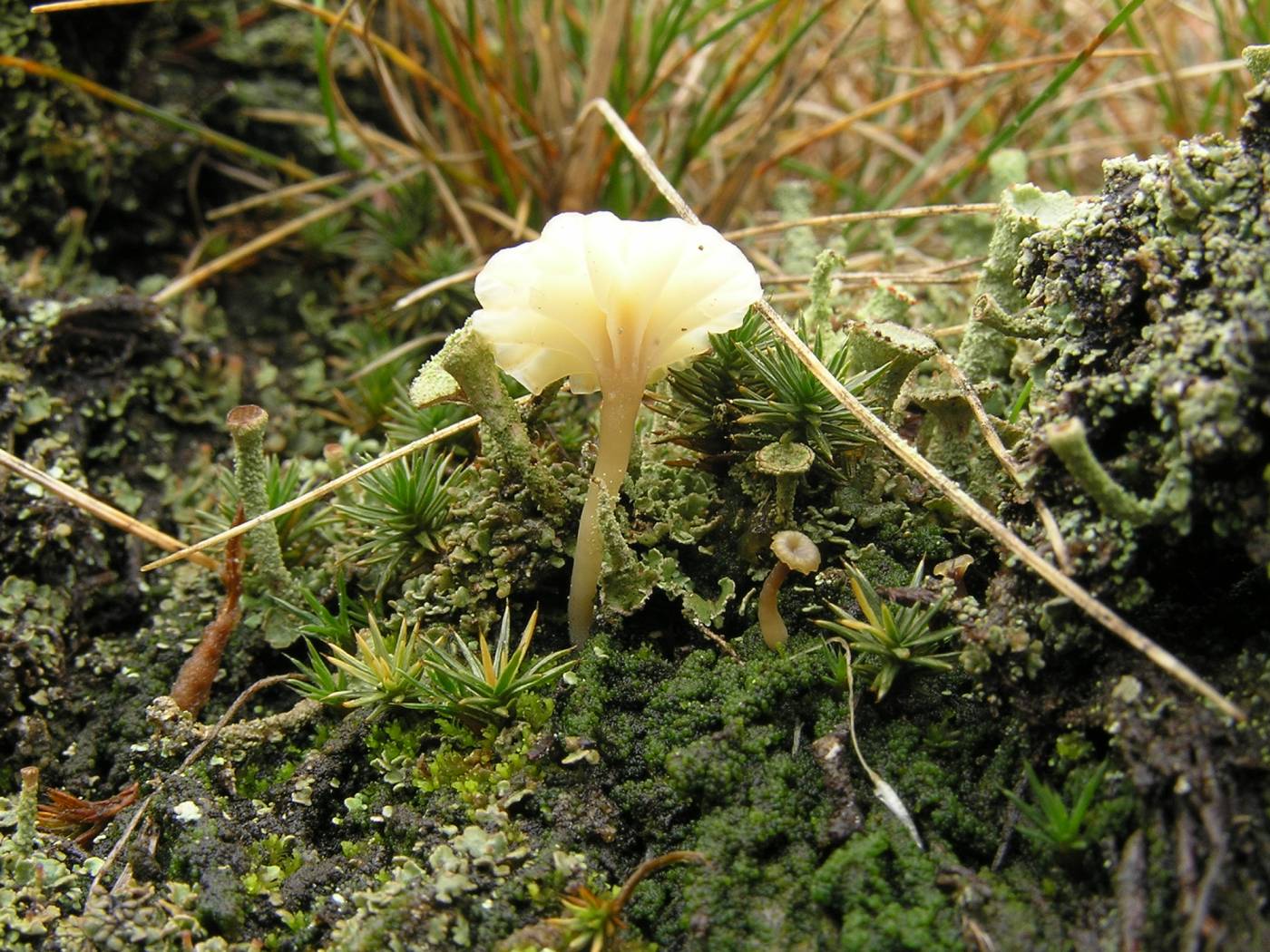The most frequently recorded basidiolichen in the Czech Republic. However, its distribution in the country and abundance estimation requires further studies, as in the sterile stage, it is practically indistinguishable from several related species, which may potentially occur in the area. Lichenomphalia ericetorum grows most often on decaying or already decomposed wood, on peat, bryophytes, acidic soil and sandstone rocks. It is widespread across the temperate zone of the Northern Hemisphere. It probably occurs throughout the entire Czech Republic except for intensively-managed agricultural areas. The species is rather rare in warm areas, common in mountains. However, it may be easily overlooked in the field, as it often occurs sterile.
Lichenomphalia alpina, L. velutina, L. grisella and L. meridionalis are very similar species, which’s presence was not reliably evidenced in the country yet. However, their occurrence can not be ruled out, especially in the highest mountains. Only L. alpina is well recognisable when fertile thanks to the strongly yellow fruiting bodies. All the other mentioned lichens may be distinguished from L. ericetorum by relatively darker pigments and a specific incrustation, eventually also by basidiospores.
The widely used name L. umbellifera actually belongs to a non-lichenized fungus of the genus Marasmius s. l. (Voitk et al. 2023).
Literature: Voitk A., Thorn G. & Saar I. (2023): Lichenomphalia umbellifera: fungible and infungible epithets and species concepts. – Mycotaxon 137: 629–667.
taxonomic classification:Basidiomycota → Agaricomycetes → Agaricales → Hygrophoraceae → Lichenomphalia
most frequented synonyms:Lichenomphalia umbellifera, Omphalina umbelliferaRed List (Liška & Palice 2010):LC – least concern
Occurrence in the Czech Republic
All records: 165, confirmed 138. One click on a selected square displays particular record(s), including their source(s).



